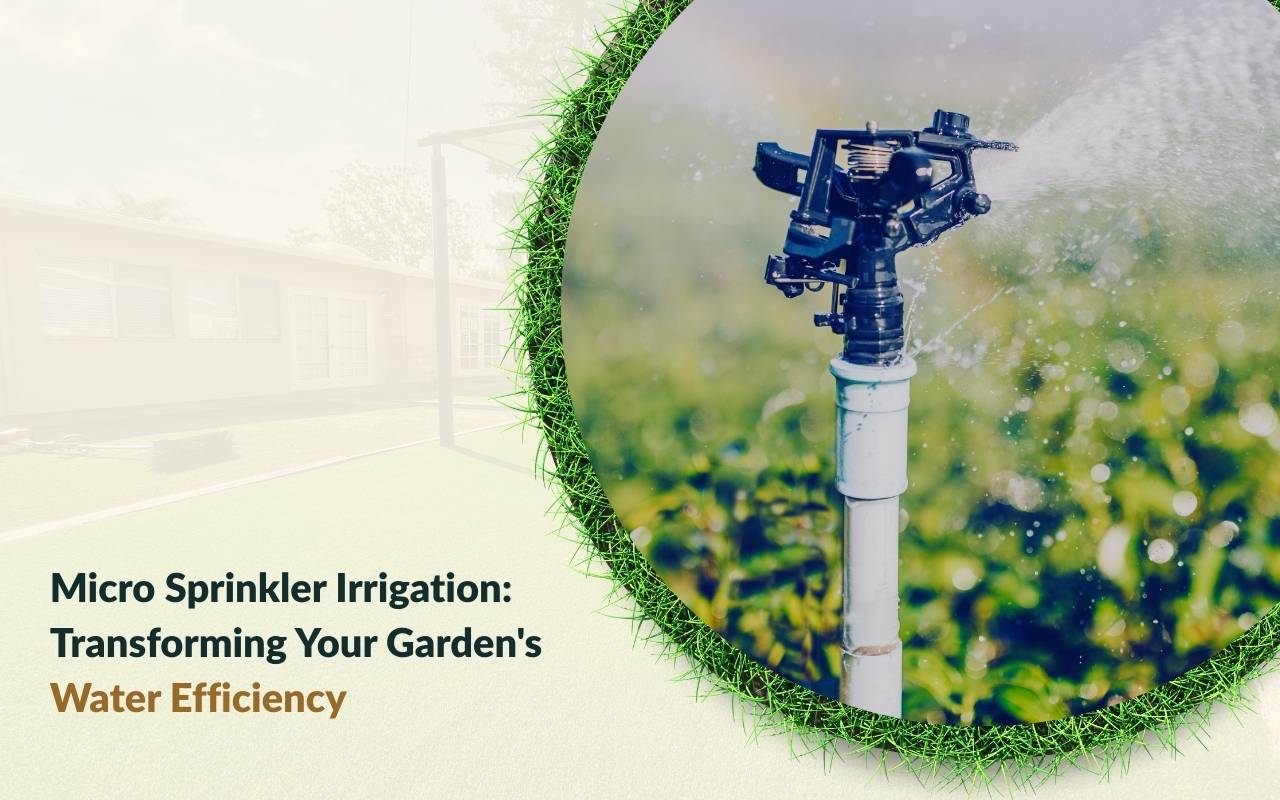
In a world where sustainability matters, water efficiency is crucial. Traditional methods waste water, leaving gardeners seeking better solutions. Therefore, micro sprinkler irrigation offers precision watering, emulating natural rainfall and conserving resources. With this technique, gardeners maintain lush landscapes even under water restrictions. Moreover, its ability to cover large areas uniformly reduces stress and enhances plant growth. Consequently, micro sprinkler irrigation makes gardens eco-friendly, efficient, and beautiful.
Benefits of Micro Sprinkler Irrigation
Micro sprinkler irrigation delivers water directly to root zones, minimizing runoff and evaporation. It releases droplets at low pressure, mimicking natural rainfall. Additionally, soil absorbs moisture slowly, encouraging strong root systems resistant to drought stress. Gardeners benefit from healthier plants and lower water bills. Moreover, this system adapts easily to different plants and spacing. Uniform coverage avoids dry spots, while gentle watering prevents foliar diseases.
- Precise water delivery to root zones
- Lower water bills with reduced waste
- Gentle watering that prevents plant diseases
How Micro Sprinkler Irrigation Works
This system uses small emitters connected to tubing and a main water supply. Filters and regulators ensure steady flow at low pressure. Emitters spray fine droplets, reducing evaporation and boosting soil infiltration. Furthermore, timers control watering cycles, preventing overwatering. Gardeners can adjust schedules based on plant needs and soil moisture. With smart sensors, micro sprinkler irrigation adapts in real time to rainfall or cooler weather.
- Small emitters with low-flow output
- Filters and regulators for even distribution
- Smart controllers for real-time adjustments
Components of a Micro Sprinkler System
A micro sprinkler irrigation setup includes several essential parts. Water sources can be mains, wells, or rainwater tanks. Filters remove sediment, preventing clogs. Additionally, pressure regulators keep water flowing steadily, usually between 10–30 psi. Polyethylene tubing carries water to emitters, with fittings customizing layout. Micro sprinkler heads, placed on stakes or risers, distribute water evenly and can be adjusted as needed.
- Water source and filter system
- Pressure regulator for steady flow
- Polyethylene tubing with connectors
Designing Your Micro Sprinkler System
Start by mapping your garden, noting plant groups and soil types. Then, divide zones based on similar water needs for efficiency. Calculate flow and pressure needs for each zone to ensure reliable coverage. Moreover, check that filters and regulators can manage total demand. Spacing sprinkler heads according to spray radius avoids overspray. Overlapping coverage ensures uniform watering without waste.
Installation Process for Micro Sprinkler Irrigation
Lay mainline tubing along the garden layout. Insert barbed fittings at emitter points, attaching tubing or sprinkler heads. Angle heads carefully to avoid overspray. Cap ends of tubing, flush debris, and reinstall caps. Next, test the system, checking for leaks and spray consistency. Attach filter, regulator, and timer at the water source. Finally, program schedules based on plant and soil requirements. With these steps, micro sprinkler irrigation becomes effective and reliable.
Maintenance Tips for Micro Sprinkler Systems
Regular checks keep systems efficient. Clean filters monthly to prevent clogs. Inspect regulators to maintain correct pressure. Additionally, check tubing and fittings for leaks or cracks. Repair damaged parts promptly to avoid water loss. Winterize the system by draining water before freezing months. Before spring, flush lines to remove sediment. Finally, inspect emitters for clogs or misalignment. These practices extend the life of your micro sprinkler irrigation system.
Adjusting Water Distribution with Micro Sprinklers
Micro sprinkler irrigation allows precise water control. Use different flow rates and spray patterns for plant-specific needs. Low-flow emitters suit shallow-rooted plants, while high-flow emitters serve thirsty vegetables or fruit trees. Moreover, adjust nozzles to change spray radius and arc. Pressure-compensating emitters maintain steady flow on uneven terrain. Multi-zone systems let gardeners stagger run times, ensuring balanced hydration across plant varieties.
Troubleshooting Common Micro Sprinkler Issues
Common issues are usually easy to fix. Dry spots may mean clogged emitters. Clean or replace nozzles to restore spray patterns. Low pressure often results from clogged filters or faulty regulators. Leaks in tubing cause water waste, so inspect zones while running. Consequently, repairing holes with couplings and checking fitting connections is essential. Emitters that fail may have airlocks, so flush lines to clear trapped air. Regular inspections keep micro sprinkler irrigation reliable.
Maximizing Plant Growth with Micro Sprinkler Irrigation
Consistent root-zone moisture fosters vigorous plant growth. Short, frequent cycles prevent soil crusting during heat. Sensors refine watering schedules, reducing waste and preventing overwatering. Additionally, combining micro sprinklers with mulch conserves moisture and balances soil temperature. This setup improves nutrient uptake and root development. With proper calibration, micro sprinkler irrigation ensures lush, productive gardens year-round.
FAQs about Micro Sprinkler Irrigation
How does micro sprinkler irrigation save water?
It delivers water precisely to roots, minimizing runoff and evaporation effectively.
Is micro sprinkler irrigation suitable for all plants?
Yes, it adapts to vegetables, flowers, trees, and container gardens.
Do I need professional installation?
Not always. Many gardeners install systems themselves with simple guides.
How often should I maintain the system?
Clean filters monthly and inspect emitters seasonally for best performance.
Can the system adjust to weather conditions?
Absolutely. Smart controllers and sensors adapt irrigation during rain or cooler periods.
Embracing Water Efficiency in Your Garden
Embracing micro sprinkler irrigation ensures sustainable and water-wise gardening. Precise watering minimizes waste while optimizing plant health. Moreover, with uniform coverage and adaptability, gardeners enjoy lush landscapes, even in restricted areas. Upgrade your garden with this eco-friendly method today. For expert help, contact our team. Explore our landscaping services in Gilroy, Salinas, Morgan Hill, and artificial turf installation in Hollister.
